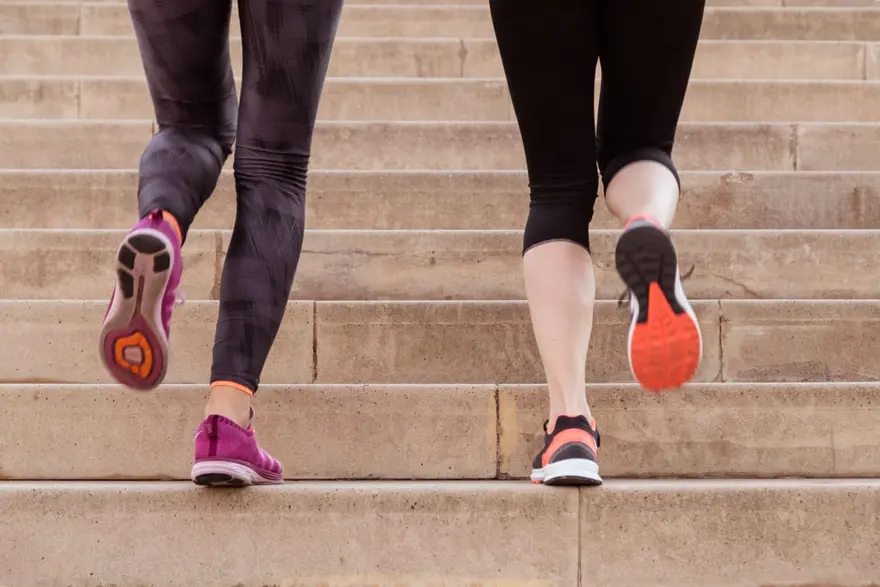Preventive Healthcare
Exercise and Type 1 Diabetes: Tips for Safe Physical Activity
451 Views
0

Importance of Exercising with Type 1 Diabetes
Living with type 1 diabetes doesn't mean you have to give up on an active lifestyle. In fact, regular exercise is one of the most effective tools for managing your condition. Here's why type 1 diabetes exercise management is crucial:
- Improved blood glucose control: Physical activity can lower blood sugar levels and enhance insulin sensitivity, although the long-term impact on HbA1c may be less pronounced compared to type 2 diabetes.
- Reduced cardiovascular risk: Regular exercise helps prevent heart disease, lowers blood pressure, and improves lipid profiles, which is essential for individuals with diabetes who are at higher risk of cardiovascular complications.
- Enhanced musculoskeletal health: Engaging in physical activity strengthens muscles and bones, reducing the risk of injuries and promoting overall well-being.
- Mental health benefits: Exercise is known to alleviate anxiety, boost mood, and improve general well-being, which is particularly important when coping with a chronic condition like type 1 diabetes.
Despite the potential risks of hypoglycemia and hyperglycemia during exercise, the numerous health benefits significantly outweigh these concerns, making physical activity an essential part of type 1 diabetes fitness care.
Types of Workouts You Can Do with Type 1 Diabetes
When it comes to type 1 diabetes fitness, there are various types of workouts you can engage in safely and effectively. Let's explore some options:
Aerobic Exercise
Aerobic activities raise your heart rate and improve cardiovascular fitness. For people with type 1 diabetes, aerobic exercise can be divided into two categories:
Continuous aerobic exercise
This involves sustained periods of moderate-intensity activity, such as:
- Walking
- Jogging
- Cycling
- Swimming
While continuous aerobic exercise can effectively lower blood glucose levels, it may also increase the risk of hypoglycemia, especially when performed at high intensities or for extended durations.
Interval aerobic exercise
This type of workout alternates between high-intensity and low-intensity periods. Interval training is effective in managing blood sugar levels and may be less likely to cause severe hypoglycemia compared to continuous aerobic exercise. Studies suggest that interval workouts may be particularly beneficial for men, especially when starting with lower blood glucose levels.
Anaerobic Exercise
Anaerobic exercises involve higher intensity and shorter duration, such as sprinting, weightlifting, and high-intensity interval training (HIIT). These activities can cause an initial spike in blood sugar levels due to the release of stress hormones like adrenaline. However, they may also lead to a drop in blood sugar post-exercise. To safely engage in anaerobic exercise:
- Monitor your blood sugar levels closely before and after the workout.
- Adjust your insulin and carbohydrate intake accordingly to prevent both hypoglycemia and hyperglycemia.
- Consider performing anaerobic exercises after aerobic activities to help stabilise blood sugar levels.
Resistance Training
Resistance training, which includes muscle-strengthening exercises using weights, resistance bands, or body weight, offers significant benefits of exercise for type 1 diabetes.
- Greater blood glucose stability: Resistance exercise primarily uses intramuscular glycogen rather than blood glucose, providing better blood sugar stability compared to aerobic activities. This reduces the risk of hypoglycemia during and after the workout.
- Improved muscle strength and bone health: Regular resistance training strengthens muscles and enhances bone density, which is crucial for overall health and reducing the risk of injuries and osteoporosis.
- Reduced insulin requirements: Studies have shown that resistance training can decrease insulin needs in people with type 1 diabetes, aiding in more effective management of the condition.
Here's what to remember:
- Start with lighter weights and gradually increase the resistance as you build strength.
- Focus on proper form and technique to prevent injuries.
- Monitor your blood sugar levels and adjust insulin and carbohydrate intake as needed.
High-Intensity Interval Training (HIIT)
HIIT involves short bursts of high-intensity exercise followed by periods of rest or low-intensity activity. This type of training is particularly beneficial for individuals with type 1 diabetes for several reasons:
- Glucose management: HIIT causes similar physiological glucose responses to resistance training, relying more on intramuscular glycogen and phosphagens than blood glucose. This makes HIIT safer in terms of reducing the risk of hypoglycemia.
- Cardiovascular benefits: HIIT improves cardiovascular health and can be an efficient way to achieve significant health benefits in a shorter amount of time compared to traditional aerobic exercises.
Flexibility and Balance Training
Activities like yoga and Tai Chi are important for flexibility, muscle strength, and balance. These forms of exercise are particularly recommended for older individuals with type 1 diabetes to reduce the risk of falls and improve overall mobility.
Mixed Exercise and Sports
Mixed exercises combine elements of both aerobic and anaerobic activities, such as tennis, basketball, or workouts with intervals of high and low intensity. Engaging in sports can be a fun and social way to stay active with type 1 diabetes. However, blood sugar levels can fluctuate during mixed exercises, so it's essential to:
- Continuously monitor your blood sugar levels throughout the activity
- Have fast-acting carbohydrates readily available to treat any episodes of hypoglycemia
- Communicate with your teammates or coach about your diabetes management needs
Non-Weight-Bearing Activities
For individuals with certain complications associated with type 1 diabetes, such as diabetic peripheral neuropathy (DPN), non-weight-bearing activities like swimming and cycling can be excellent options. These exercises increase heart rate without putting excessive strain on the joints, making them ideal for those who need to be mindful of foot health. When engaging in non-weight-bearing activities:
- Choose a comfortable intensity level and gradually increase the duration of your workouts.
- Wear appropriate footwear and check your feet regularly for any signs of irritation or injury.
- Monitor your blood sugar levels and adjust insulin and carbohydrate intake accordingly.
Benefits of Exercise with Type 1 Diabetes
The benefits of exercise for type 1 diabetes are numerous and far-reaching. Regular physical activity can lead to improved insulin sensitivity, reducing insulin resistance and the amount of insulin needed to manage blood sugar levels. Exercise also contributes to better glycemic control, helping maintain blood sugar levels within the target range and reducing the risk of diabetes-related complications.
In addition to the physical benefits, engaging in type 1 diabetes fitness can have a positive impact on mental health. Exercise is known to reduce stress, improve mood, and boost self-confidence. For individuals with type 1 diabetes, the sense of accomplishment and control gained through regular physical activity can be particularly empowering.
Precautions for Working Out with Type 1 Diabetes
Consult Your Healthcare Provider
Before starting any new exercise program, it's crucial to consult your healthcare provider, especially if you have underlying health conditions. Your diabetes care team can help you develop a personalised fitness plan that takes into account your specific needs and goals. They can guide you in adjusting your insulin doses, carbohydrate intake, and blood glucose monitoring schedule to accommodate your exercise routine.
Monitor Your Blood Glucose Levels
Checking your blood glucose levels before, during, and after exercise is essential for type 1 diabetes fitness. Aim to check your levels:
- 15-30 minutes before starting your workout
- Every 30 minutes to 1 hour during prolonged exercise
- Immediately after finishing your activity
- Several hours post-exercise to watch for delayed hypoglycemia
Adjust Your Insulin Doses
Exercising with type 1 diabetes often requires adjusting your insulin doses to prevent hypoglycemia. The type, intensity, and duration of your activity will determine how much you need to reduce your insulin. Some general guidelines include:
- Reducing your mealtime insulin dose by 30-50% if exercising within 2-3 hours after eating
- Using a temporary reduced basal rate on your insulin pump during prolonged activity
- Decreasing your nighttime basal insulin if engaging in afternoon or evening exercise
Stay Hydrated and Fueled
Proper hydration and nutrition are key for type 1 diabetes exercise. Drink plenty of water before, during, and after your workouts to prevent dehydration. If exercising for over an hour, consider having a sports drink that provides 15-30 grams of carbohydrates per 8 ounces to maintain your blood sugar and energy levels. Always carry fast-acting glucose sources like glucose tabs, juice, or candy to quickly treat hypoglycemia if needed.
Warm Up and Cool Down
Incorporating a proper warm-up and cool-down into your exercise routine is important for preventing injuries and regulating your blood glucose response. Spend 5-10 minutes gently moving your body and gradually increasing your heart rate before launching into more intense activity. After your workout, take another 5-10 minutes to slowly bring your heart rate back down and stretch your muscles. This gradual approach helps stabilise your blood sugar levels and reduces post-exercise hypoglycemia risk.
Be Prepared for Emergencies
Despite your best efforts, sometimes blood sugar fluctuations or injuries can happen during exercise. Always wear a medical ID bracelet that identifies you as having type 1 diabetes, and carry a cell phone in case you need assistance. Let a workout buddy, coach, or gym staff know about your condition and how to help if an emergency arises. Keep your diabetes supplies, fast-acting glucose, and glucagon kit easily accessible during your activities.
Conclusion
Incorporating exercise into your type 1 diabetes fitness plan is essential for maintaining optimal health and well-being. Remember to always consult with your healthcare provider before starting a new exercise routine, and don't hesitate to reach out for guidance and support.
Metropolis Healthcare, a leading chain of diagnostic labs across India, offers accurate pathology testing and health check-up services to help you monitor your diabetes management. With a team of qualified blood collection technicians and advanced diagnostic labs, Metropolis Healthcare is committed to delivering reliable results and personalized care to empower you in prioritising your health.























 WhatsApp
WhatsApp